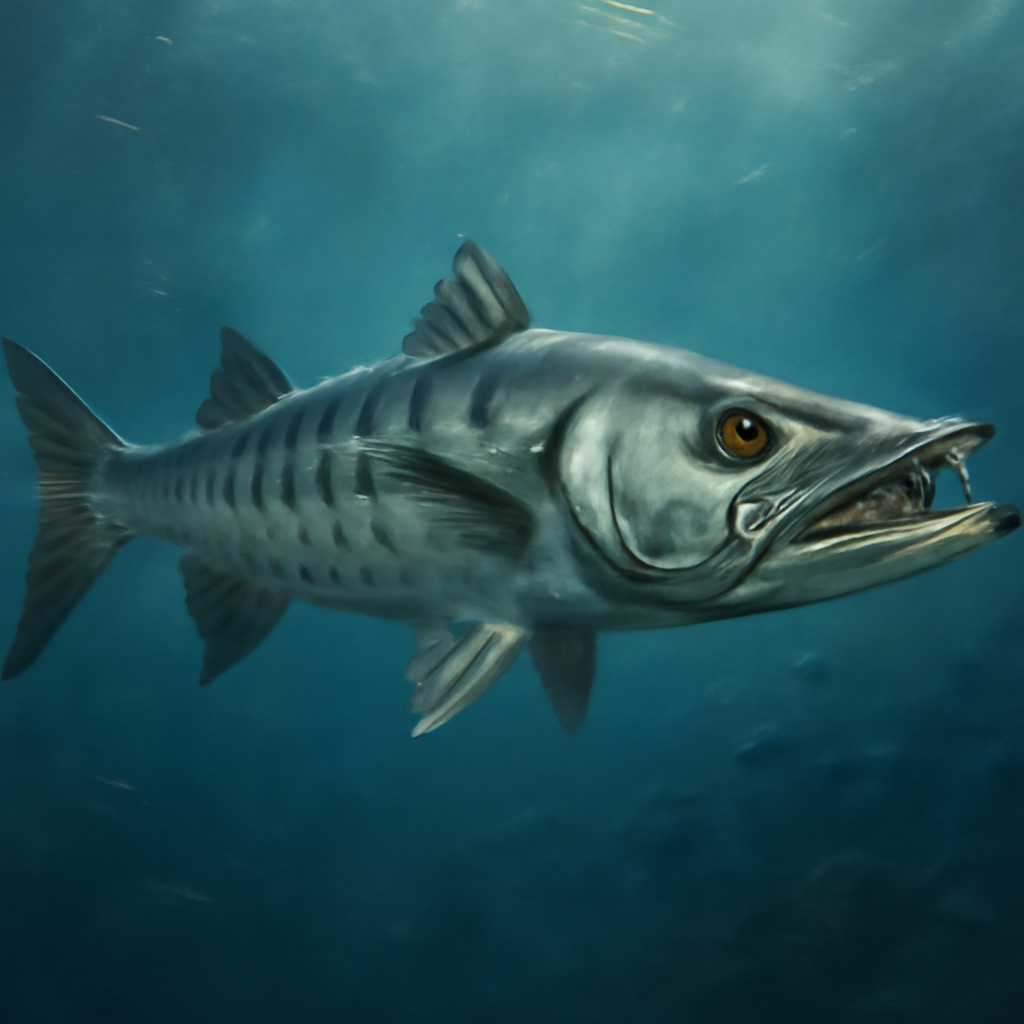Key Takeaways
- Barracuda is known for their streamlined bodies and swift, aggressive hunting style, whereas Piranhas are recognized for their sharp teeth and group feeding behavior.
- While Barracudas prefer open waters and coral reefs, Piranhas mostly inhabit freshwater rivers and lakes in South America.
- In terms of diet, Barracudas often target larger prey like small fish and squid, contrasting with Piranhas that feed on smaller fish and carcasses.
- Behaviorally, Barracudas are solitary predators, but Piranhas tend to hunt in groups, which can cause rapid, overwhelming attacks on prey.
- Both fish have unique adaptations that make them effective predators within their environments, but their hunting tactics and habitats differ greatly.

What is Barracuda?
The Barracuda is a long, slender fish with a pointed head and razor-sharp teeth, native to warm ocean waters. It is famous for its speed and predatory prowess.
Physical characteristics
With a sleek, torpedo-shaped body, Barracudas can reach impressive speeds, making them one of the fastest fish in the seas. Their coloration varies, often with metallic shades that help them blend into underwater environments.
Habitat preferences
They prefer coral reefs, coastal areas, and open waters, often lurking near the surface or around underwater structures. These locations provide ample hunting opportunities and shelter.
Diet and feeding behavior
They hunt primarily smaller fish, ambushing prey with rapid strikes. Their sharp teeth allow them to grasp and tear flesh efficiently, making them formidable predators.
Behavioral tendencies
Usually solitary or in small groups, Barracudas are known for their aggressive strikes and territorial nature. They are active during daylight hours, relying on sight to locate prey.
Reproductive habits
Barracudas spawn in open water, releasing eggs that drift with currents. Their breeding season varies depending on location but generally coincides with warmer months.

What is Piranha?
The Piranha is a small to medium-sized freshwater fish famous for its sharp teeth and feeding frenzies. It inhabits rivers and lakes across South America with dense vegetation.
Physical attributes
Piranhas have a robust, laterally compressed body with a distinctive, often dark coloration. Their powerful jaws and triangular teeth are adapted for tearing flesh.
Habitat and range
They thrive in slow-moving waters, floodplains, and submerged vegetation areas, which offer cover and food sources. They are mostly found in the Amazon basin and surrounding rivers.
Diet and feeding strategies
Feeding varies among species but includes smaller fish, insects, and sometimes plant matter. Their sharp teeth enable quick bites, especially during group attacks on larger prey or carcasses.
Behavioral patterns
Piranhas often hunt in groups, creating feeding frenzies that can strip prey rapidly. They is more active during the dry season when water levels drop and food becomes scarcer.
Reproduction and breeding
They lay eggs in submerged vegetation or on riverbanks, with some species forming breeding colonies. Parental care is minimal, and spawning peaks during specific seasons.
Comparison Table
Below is a table highlighting key distinctions and similarities between Barracuda and Piranha in various aspects:
| Parameter of Comparison | Barracuda | Piranha |
|---|---|---|
| Habitat Type | Open ocean, coral reefs | Freshwater rivers, lakes |
| Size Range | Up to 6 feet long | Usually under 2 feet |
| Diet | Primarily larger fish, squid | Smaller fish, carcasses |
| Hunting Style | Ambush predator with high speed | Group feeding, rapid bites |
| Teeth Structure | Long, needle-like | Triangular, serrated |
| Social Behavior | Solitary or small groups | Group-oriented |
| Reproduction | Eggs released into open water | Eggs laid on vegetation or banks |
| Speed | Can reach 35 mph | Relatively slow swimmers |
| Defense Mechanism | Fast reflexes, camouflage | Shoaling, sharp teeth |
| Threat to Humans | Rarely aggressive unless provoked | Can be dangerous during feeding frenzies |
Key Differences
Here are some clear, distinct contrasts between Barracuda and Piranha:
- Habitat location — Barracudas are ocean dwellers, whereas Piranhas inhabit freshwater systems.
- Size and build — Barracudas are larger with elongated bodies, Piranhas are smaller and stockier.
- Feeding behavior — Barracudas hunt alone with swift strikes, Piranhas gather in groups and bite collectively.
- Teeth design — Barracudas have needle-like teeth for catching larger prey, Piranhas have triangular, serrated teeth for tearing flesh.
- Reproductive methods — Barracudas spawn in open water, Piranhas lay eggs on riverbeds or vegetation.
- Activity patterns — Barracudas are active during the day, Piranhas tend to be more active during dry seasons or low water levels.
FAQs
Are Barracudas dangerous to humans?
While they are capable of biting if provoked, Barracudas rarely attack humans, mostly acting out of self-defense or curiosity, and are generally not aggressive toward people.
Can Piranhas live outside water?
Piranhas are strictly aquatic, and cannot survive outside water for long periods, though they can temporarily be found trapped on land during floods or low water conditions.
Do Barracudas change color during hunting?
Yes, some species can change coloration slightly to blend into surroundings, especially during hunting or when feeling threatened, aiding their ambush tactics.
Are Piranhas territorial?
Many Piranha species show territorial behaviors, especially during breeding seasons, defending specific areas from intruders and other groups.
